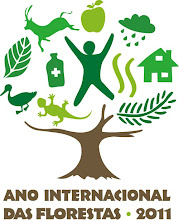 "What these early paintings reveal is a very close stylistic continuity with the last phases of rock art in this region. This connection is highlighted by the 'X-ray' infill of the bark painting figures - the characteristic motifs used to represent internal organs within the body cavities of animals - which are also common in the rock art. The outline shape of the species represented, and the devisions indicated between certain limb parts, are also features shared between the two media.
"What these early paintings reveal is a very close stylistic continuity with the last phases of rock art in this region. This connection is highlighted by the 'X-ray' infill of the bark painting figures - the characteristic motifs used to represent internal organs within the body cavities of animals - which are also common in the rock art. The outline shape of the species represented, and the devisions indicated between certain limb parts, are also features shared between the two media.The early collections point to the contiguity of painting on the walls of caves used as wet-season shelters.
Kunwinjku today, who have sheltered regularly in both bark houses and rock country caves during their youth, and occasionally still do in the present, describe these two contexts of painting as being equivalent.
(...) Karrnaradj, a senior Kunwinjku man at Oenpelli in 1982, described it this way:
My father painted two red kangaroos in a cave in my country. Before men painted in bark houses and in caves, for children to look and see. To make them happy. When we tell the story they can look.
Kunwinjku indicate that paintings on bark shelters, and on the walls of caves were people lived, were produced in a relatively informal context as opposed to ceremonial art production.They point to the half-complete and inexpert paintings alonside more careful works to show that this informal atmosphere provided the occasion when young artists were 'trained' to paint.
(...) These shelter paintings are described to have four interlinked purposes. The first is to illustrate the public versions of mythical episodes or historical occurences which are 'for fun' and 'to make children happy'. These stories are retold in a fairly relaxed atmosphere for the amusement and education of children as well as for the pleasing decoration of the space. The second purpose is 'practice' for the young artist in completing such illustrations. While the subjects may be outside versions of Ancestral myths, more important ceremonial interpretations could also be attributed to them (...). The third aim of producing motifs such as hand stencils is to personalize the space. This too is carried out in an atmosphere of 'fun' and there are children's hanprints alongside those of the adults in the caves. Spencer recorded a similar explanation for the hand stencils in the caves at Oenpelli in 1912 (1928: 812). Fourthy, these paintings, as well as other more elaborate paintings executed by senior artists, are described as a record or memorial of an individual having visited the site."
Luke Taylor (2007): Seeing the Inside - Bark Painting in Western Arnhem Land (p. 17-19)















Sem comentários:
Enviar um comentário